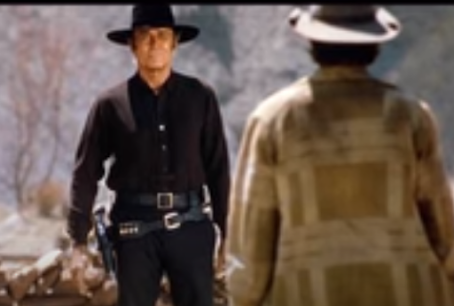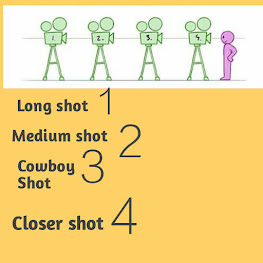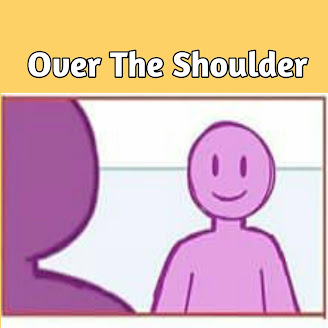The camera angle in our filmmaking is best to look good but sometimes it not work because if your story doesn't understand to the audience then out work has no value. we really understand the camera angle which you influence the audience better knowing the storytelling of the cinematographer.
Cinematographer expresses their story in a visual language which understands easily. which shot you covered in-camera as per the dialog in the script. Over the year cinematographer creates an understanding story behind the dialog.
 |
| 12 best camera angle |
Why Your camera angle is important in filmmaking:-
- Perspective
- Emotion
- Editing
Perspective:-
What you actually have seen in a short film to understand film multiple perspectives.
Emotion:-
Number two emotion different camera angles can help you convey different emotions.
Editing:-
Editing your video becomes a lot easier when you have multiple angles to choose from which will ultimately help you tell a better story.
12 Camera Angle Here Discuss:-
- Wide shot:-
The wide shot is usually captured on a wider angle lens so as to see more of your surroundings and is more frequently used when you're wanting to establish a location so the viewer can understand where the scene is taking place wide shots can also be used to portray emotion like loneliness insignificance or feelings of being removed from the action.
2. Long Shot:-
The long-shot is also used to establish location but with a bigger emphasis on your subject filling the entire frame usually showing their full-body this look is best created using a tighter focal length and shooting from a distance a medium shot is usually from the waist up and is used to help the viewer focus in on what your subject is doing or saying this shot is also great for helping the viewer feel.
 |
| long shot |
 |
| camera long shot |
3. Medium Shot:-
What is the subject doing in that to show you through this camera angle? The medium shot most closely represents the distance you view people from as you're having a conversation with the cowboy shot this shot is discuss below.
4. cowboy shot:-
Cowboy shot is between long shot and medium shot its popular use in western films.
 |
| western film cowboy shot |
5. Tight (Close up) shot :
This shot mainly captures the subject face shot with the shoulder used mainly for dialogue or to show the detailed expression of your subject tighter shots are usually used for important or intense or intimate pieces of dialogue or action to help the viewer know that they should really pay attention to what's being said and tight shots are typically best shot on tighter focal links like around 50 to 100 millimeter.
6. Detail Extreme close up shot:-
A detail or extreme closeup shot is used to put emphasis or importance on a specific detail in your image detail shots are a great way to create mystery in-depth in a story to help draw the viewers attention to the common theme and again detail shots are typically best shot on tighter focal lengths like 50 to 100 millimeters or macro lenses.
 |
| extreme closer shot |
 |
| camera position for different shot |
7. Low Camera angle shot:-
The low camera angle is used to make your subject appear larger the life and to portray power and dominance low camera angles can also be made to portray Wonder and majesty as long as your subject is smaller than what surrounds them in your image.
8. High camera angle shot:-
The high camera angle does the exact opposite by portraying your subject as weak and inferior or smaller and vulnerable.
 |
| low angle, high angle, and normal shot |
9. Dutch Camera angle shot
A Dutch angle is basically whenever you step on your frame and tend to be used to convey unpleasant movements like something that is not basically right to give the impression that the world is on the side of which the Dutch angles can be skillfully used to tell us something is wrong.
 |
| Dutch angle |
10. Over the shoulder shot:-
Over the shoulder, shots are exactly how they sound when you have two subjects talking to one another you put the camera behind the shoulder of one of the two placings one on the foreground giving the perspective as if you are the person that is being talked.
 |
| conversation with a shoulder shot |
11. Pov (point of view) shot:-
A POV or point of view shot depicts an angle that shows what a character is looking at this episode allows the viewer to take on the perspective of the character and begin to understand their state of mind on a more personal level this is commonly used in action or sports scenes to help give the audience the thrill of being in the driver's seat and is usually shot on a wide-angle lens so that you can see more of your surroundings.
 |
| pov shot |
12. Cutaway shot:-
a cutaway shot is an interruption of a continuously filmed scene by inserting a view of something completely different cutaways are great to help transition to new scenes or to show side stories happening at the same time as you're the main story.
Some tips using camera angle:-
1. Be careful to use more camera angle isn't useful in every shot.
2. Camera angle enhance your story in a better way
3. Don't use unnecessary camera angle
4. The 180-degree rule is basically an invisible line that you draw in the middle of your scene and you have to make sure not to cross over the other side of that line
 |
| 180- degrees rule |
5. 30-degree rule which basically states that when cutting between two angles of the same subject like an interview of someone talking you want to make sure that our angle a and camera angle B are at least 30 degrees apart and ideally they'd also be a different type of angle like cutting from a medium shot straight in front of the subject to a tight shot by keeping this in mind it will help your angles cut together more seamlessly and professionally.
 |
30-degrees rule
|
These are tips of using the camera angle you use in your story then tell me which camera angle you use most in your story?


















